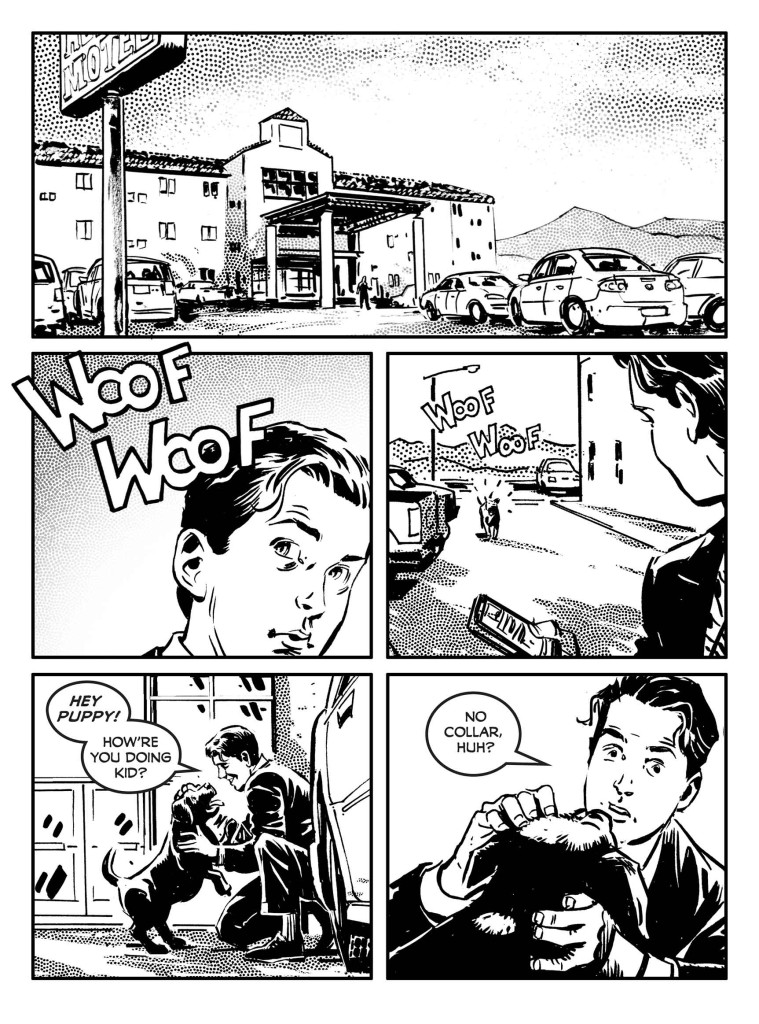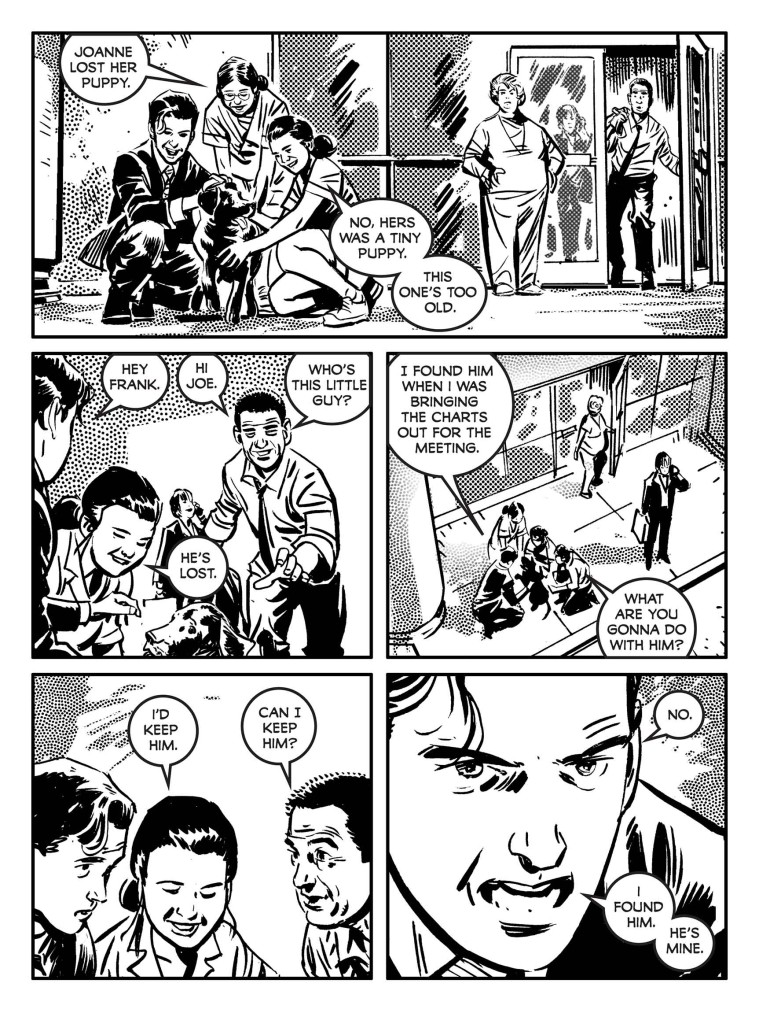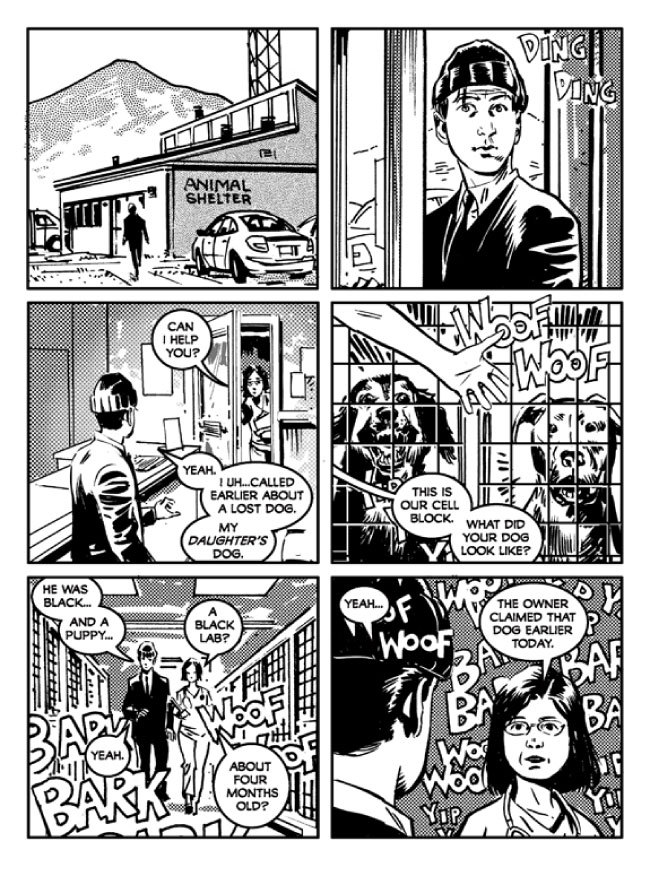I love this comic. It takes a skilled writer to turn something as mundane as a businessman finding a lost dog into an obsessive awe-inducing chase that is equal parts ominous and heartwarming. And it’s not often you find a comic that is entirely the product of one person’s efforts—a true solo venture that offers exceptional cohesion between the illustration and the writing. In praise of this work, I might need to resort to spoilers.
Kinski #1, another out of the box publication from Monkeybrain Comics, sets up a story whose trajectory is well beyond predicting. The title character is a dog, named for the notorious German actor, Klaus Kinski, who falls under the affections of a crazed and concerned business rep who is in town conducting seminars for a company that appears to manufacture bird food. Sounds boring, right? Wrong.

Despite the simplicity of the plot, the absence of extraordinary characters such as superheroes and supervillains, and the low stakes of the drama, the story told manages to be exciting in strange ways. The protagonist, Joe, quickly goes from being a Good Samaritan to a questionable character as he frantically pursues this dog even after it’s returned to its rightful owners—mind you, a dog he spent only a handful of minutes with before it was taken away.
Writer, illustrator, and storyboarder, Gabriel Hardman is the mastermind behind this thought provoking piece, and he’s got a résumé that speaks for itself. He is the co-writer and artist for Starwars: Legacy, co-writer for Planet of the Apes: Cataclysm, illustrator for Hulk, Secret Avengers, and Agents of Atlas, and he drew the storyboards for Inception, Dark Knight Rises, X-Men 2, and other major blockbusters. Hardman has collaborated with others on countless successful projects, but Kinski is entirely his own.
Hardman is primarily an artist, and it most certainly shows in Kinski #1. There are crucial, character-building moments throughout the story that would pass unnoticed save for the excellence of the artwork. When another character expresses interest in keeping Kinski, Joe puts on a look that is so startlingly sinister, that the reader is almost forced to question his sanity and stability. Few words are given to these moments; Hardman’s illustrations tell more than words ever could.

The black and white artwork is an interesting touch. It adds a degree of intrigue and mystery, as if there’s a detail or two still that’s still left to be learned—and I’m sure there’s plenty where that’s concerned. Even despite the absence of the color, the art is detailed and fine; it’s excellently illustrated.
And excellently written as well. Without saying much about him from his mouth or from those that know him, the more persistent Joe becomes to steal back Kinski, the more we get to know his increasingly dark character. When he goes as far as to enter the backyard of Kinski’s true owners and question the child who lives there, it’s clear that there is much more to this man than meets the eye.

So where will Joe’s theft of Bosley—I mean Kinski (he belongs to Joe now)—lead? There’s an undeniable, lingering feeling that this might not end well. Joe is a bit of a sketchy character, and I’m very interested to see where Hardman plans to take him. His interest in Kinski is bordering on obsession at this point. What will happen next? I’ll be sure to follow up on later issues.